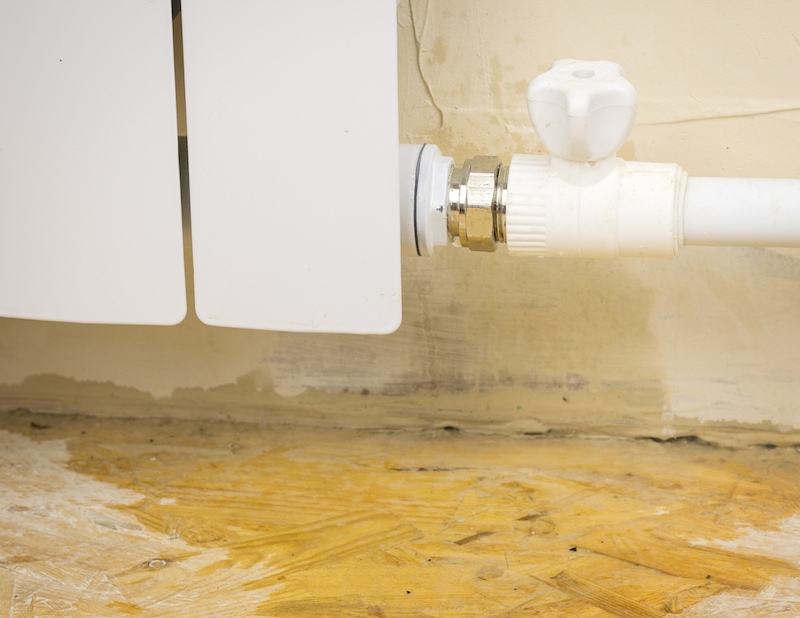How to Stop the Six Most Common Water Leaks in Your Home
How to Stop the Six Most Common Water Leaks in Your Home
Blog Article
Right here below you can discover additional good advice around How to detect water leaks in your home.

Leakages not only cause waste of water yet can likewise cause unneeded damages to your home as well as promote undesirable natural growth. Water leakages might go unnoticed because many of the pipework in our residence is concealed. By looking as well as comprehending for everyday scenarios that create leakages, you can secure your residence from future leaks and unneeded damage. Today, we will certainly consider six leakage triggers that might be causing your pipelines to trickle.
Encroaching roots
A lot of water leaks start outside your house as opposed to inside it. If you discover an abrupt decrease in water stress, say in your tap, require time to go out as well as examine your backyard. You might see damp spots or sinkholes in your lawn, which could indicate that tree origins are attacking water lines causing water to permeate out. You can have your plumber check for breach, especially if you have trees or shrubs near your residential or commercial property.
Rusty water supply
This could be the reason of staining or bending on your water pipes. If our plumbing system is old, take into consideration changing the pipelines because they are at a greater threat of rust than the more recent designs.
Faulty Pipeline Joints
The point at which your pipelines attach is regularly the weakest link in the waterline. Pipe joints can deteriorate with time, leading to water leakages. The bulk of pipeline joints are not quickly noticeable. If you have loud pipelines that make ticking or banging sounds, specifically when the hot water is switched on, your pipeline joints are probably under a lot of pressure. It is suggested to have your plumber examine your system annually.
Immediate temperature level adjustments.
Extreme temperature modifications in our pipelines can create them to broaden as well as get suddenly. This development and tightening might cause cracks in the pipes, especially if the temperature level are below freezing. It would be best if you kept an eye on just how your plumbing functions. The presence of the previously stated situations often indicates a high threat.
Poor Water Connectors
At times, a leakage can be triggered by loosened hoses and pipelines that supply your devices. In situation of a water connections leak, you may observe water running directly from the supply line or pools around your devices.
Clogged Drains
Obstructed drains could be irritating and inconveniencing, however they can often end up triggering an overflow bring about break pipes. Keep eliminating any type of products that may drop your drains pipes that could obstruct them to avoid such aggravations.
All the above are root causes of leaks however not all water leaks arise from plumbing leaks; some leaks could come from roofing leakages. All leaks need to be fixed instantly to avoid water damages.
Leakages not just trigger waste of water but can also trigger unnecessary damage to your residence as well as promote unwanted natural growth. By looking as well as recognizing for daily circumstances that trigger leaks, you can safeguard your residence from future leakages and also unnecessary damages. Today, we will look at six leakage triggers that may be creating your pipes to drip.
At times, a leak can be triggered by loosened tubes and pipelines that provide your home appliances. In instance of a water links leak, you may notice water running straight from the supply line or pools around your appliances.
How To Check For Water Leak In Your Home
How To Check for Leaks
The average household's leaks can account for nearly 10,000 gallons of water wasted every year and ten percent of homes have leaks that waste 90 gallons or more per day. Common types of leaks found in the home are worn toilet flappers, dripping faucets, and other leaking valves. These types of leaks are often easy to fix, requiring only a few tools and hardware that can pay for themselves in water savings. Fixing easily corrected household water leaks can save homeowners about 10 percent on their water bills.
To check for leaks in your home, you first need to determine whether you're wasting water and then identify the source of the leak. Here are some tips for finding leaks:
Take a look at your water usage during a colder month, such as January or February. If a family of four exceeds 12,000 gallons per month, there are serious leaks.
Check your water meter before and after a two-hour period when no water is being used. If the meter changes at all, you probably have a leak.
Identify toilet leaks by placing a drop of food coloring in the toilet tank. If any color shows up in the bowl after 10 minutes, you have a leak. (Be sure to flush immediately after the experiment to avoid staining the tank.)
Examine faucet gaskets and pipe fittings for any water on the outside of the pipe to check for surface leaks.
Undetected water leaks can happen without the home or business owner even realizing. If you suspect a water leak, but not able to find the source. It is time to contact a professional water leak detection service, The Leak Doctor.
How To Find a Water Leak In Your Home
https://www.leakdoctor.com/blog/How-To-Check-For-Water-Leak-In-Your-Home_AE197.html

Hopefully you liked our piece about How to Find Water Leaks. Thanks a ton for taking a few minutes to browse our blog. Are you aware of someone else who is involved in the subject? Please feel free to promote it. We truly appreciate reading our article about How to detect water leaks in your home.
Estimating Report this page